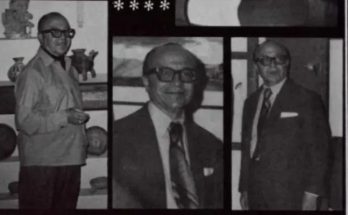By Luis Felipe Rodriguez
Don Eduardo de Heredia, in his valuable study of Fray Juan de San Miguel, founder of Uruapan, says: «Since no author, ancient or modern, fixes the date of the arrival of Fray Juan de San Miguel in Uruapan, there are no other resources to find out except by conjecture,” and concludes, “If Fray Juan founded the College of San Miguel in Guayangareo in 1531, and from there he went on to found a large part of the sierra, it can be certain that he went to Uruapan in 1533, since the historian and chronicler Beaumont affirms that Fray Juan was the guardian of the convent of Uruapan in 1534.”
For his part, Enrique Eduardo Ríos mentions that if when he left for Tehuantepec he was already in Uruapan and it happened at the end of 1532, then this town was founded in that year. In the same way, this researcher corrects those who attribute to Bishop Tata Vasco the construction of the first hospitals in Michoacán, the work of the humble Fray Juan who is overshadowed by the outstanding figure of the great bishop.
In 1540, Fray Juan left his orchard in Uruapan to take charge of the guardianship of the Convent of Santa María de Gracias in the town of San Francisco de Acámbaro, in the land of the Chichimecas, founded by the Otomí cacique Don Nicolás de San Luis Montañés, companion of Don Fernando de Tapia, who, victorious in the battle of Cerrito Colorado in July 1531, enabled the founding of Apaseo and Tócuaro.
In Acámbaro, Fray Juan finished the church and the Royal Hospital, and carried out missions in Jerécuaro, Coroneo, Contepec, Tarandacuao, Irámuco, Tócuaro and other places.
In 1542, he went to the city of Querétaro to preach the new crusade. There were no eminent people who managed avoid hearing his pleas, there was no soldier who did not receive a plea from him for such an undertaking. He asked and begged so much that in that same year he managed to get a small number of Spaniards, Tarascans and Otomi from the forces of Don Fernando de Tapia to accompany him on his return trip to the town of Acámbaro to prepare the entrance to the region of the brave Chichimeca .
From Acámbaro he went to Apaseo, then to Chamacuero and continued walking, looking for the Chichimeca robbers, who were fleeing like deer. When he arrived at a cool and pleasant place, located a few kilometers below present-day San Miguel de Allende, he stopped and, as if sensing that the future of the Indians lay in that place, ordered that branches be built for camping.
He himself chose the proper place for the church, he himself traced the streets of the new town; he, with his callused and skinny hands, cut the branches that should cover the provincial hermitage. Later he looked for new settlers for his new town and when he had gathered some, he gave them possession of the place in the name of God and in the name of the King of Spain. He left behind some Tarascan and Otomi Indians from Querétaro and after appointing authorities, distributing land for farming and preaching peace, he went north with a few people and founded Xichú in the rough Sierra Gorda; then he returned to San Miguel.
He again instructed his neighbors, charging them with the care of the cross, and returned to his Acámbaro convent, where prayers were made for the success of his missionary work.
From the cloister, he sent Fray Bernardo de Cossin to the newly founded village to take care of the souls and supervise the construction of the stone temple.
Fray Juan, although he wanted to, did not visit his town of San Miguel again after 1543. At that time Fray Juan was 43 years old. He aged with the century, because when he testified in the trial of Don Vasco, the year 1536, he said he was «thirty-six years old, more or less.» He wasn’t old, but he had worked so hard that he looked like a grandfather.
When he was most tired, he wished that God would send him back to Uruapan, to his orchard full of murmurs of water and songs of birds. It is known that he died before don Vasco de Quiroga, in the same hospital, in the same sweet peace of the Lord, loved and mourned by his people of Uruapan on May 3, 1555. Indians and Spaniards buried him in the church to the right of the main altar. The memory of his works endures in Michoacán and Guanajuato with the flavor of a Mariglian miracle.
In the portrait of him that is preserved in Uruapan, there is written this legend:
“poor, humble and religious,
to Fray Juan de San Miguel
is presented the paintbrush
for being such a jealous shepherd,
and more, when prodigiously
he walked the land,
looking like he was flying,
said Gregorian mass in San Gregorio,
and in this town it is famous
that the older ones sang it”.
Fray Juan, hunter of souls, apostolic wanderer without bread and without a coat, passed through the wide stage of New Spain pouring out love and charity. His work, big or small, was fruitful. The memory of him lives in the hearts of the poor, more than in the pages of history.
Franciscanist Notebooks, Fray Juan de San Miguel, founder of towns. Eduardo Enrique Rios. 1943.




